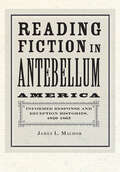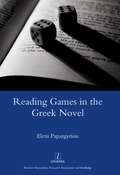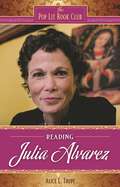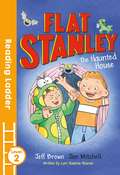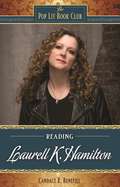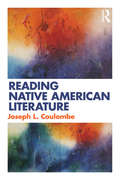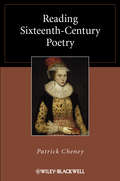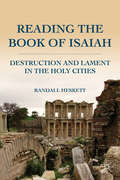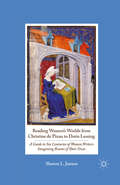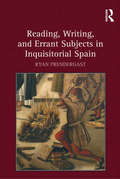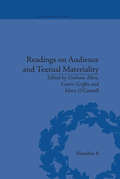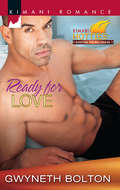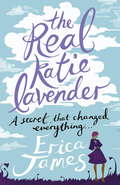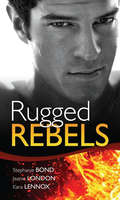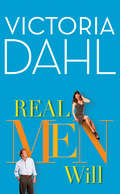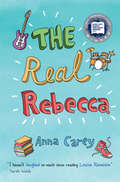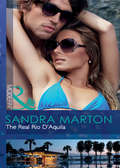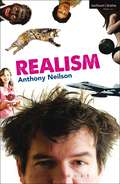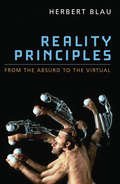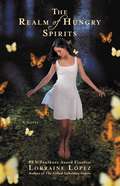- Table View
- List View
Reading Fiction in Antebellum America: Informed Response and Reception Histories, 1820–1865
by James L. MachorJames L. Machor offers a sweeping exploration of how American fiction was received in both public and private spheres in the United States before the Civil War. Machor takes four antebellum authors—Edgar Allan Poe, Herman Melville, Catharine Sedgwick, and Caroline Chesebro'—and analyzes how their works were published, received, and interpreted. Drawing on discussions found in book reviews and in private letters and diaries, Machor examines how middle-class readers of the time engaged with contemporary fiction and how fiction reading evolved as an interpretative practice in nineteenth-century America.Through careful analysis, Machor illuminates how the reading practices of nineteenth-century Americans shaped not only the experiences of these writers at the time but also the way the writers were received in the twentieth century. What Machor reveals is that these authors were received in ways strikingly different from how they are currently read, thereby shedding significant light on their present status in the literary canon in comparison to their critical and popular positions in their own time.Machor deftly combines response and reception criticism and theory with work in the history of reading to engage with groundbreaking scholarship in historical hermeneutics. In so doing, Machor takes us ever closer to understanding the particular and varying reading strategies of historical audiences and how they impacted authors’ conceptions of their own readership.
Reading Games in the Greek Novel
by Eleni Papargyriou"How is play constituent in the formation of the Greek modernist novel? Reflecting competition with European and North American models as well as internal antagonism with more established literary genres in Greece, the novel after the 1930s employed playfulness as a means to demonstrate or even perform its novelty. Innovations unexpectedly came from the Greek periphery rather than Athens, and the Greek novel swiftly exchanged a passively understood realism for communicative patterns that actively involve the reader and educate him into bringing scraps of plot into a meaningful synthesis. Featuring key Greek authors such as Yannis Skarimbas, Stratis Tsirkas and Nikos Kachtitsis, this is a comprehensive and innovative study of Greek modernist prose fiction and the first of its kind to appear in English. Eleni Papargyriou is Lecturer in Modern Greek Literature at Kings College London."
Reading Games in the Greek Novel
by Eleni Papargyriou"How is play constituent in the formation of the Greek modernist novel? Reflecting competition with European and North American models as well as internal antagonism with more established literary genres in Greece, the novel after the 1930s employed playfulness as a means to demonstrate or even perform its novelty. Innovations unexpectedly came from the Greek periphery rather than Athens, and the Greek novel swiftly exchanged a passively understood realism for communicative patterns that actively involve the reader and educate him into bringing scraps of plot into a meaningful synthesis. Featuring key Greek authors such as Yannis Skarimbas, Stratis Tsirkas and Nikos Kachtitsis, this is a comprehensive and innovative study of Greek modernist prose fiction and the first of its kind to appear in English. Eleni Papargyriou is Lecturer in Modern Greek Literature at Kings College London."
Reading Julia Alvarez (The Pop Lit Book Club)
by Alice L. TrupeThis comprehensive overview of Julia Alvarez's fiction, nonfiction, and poetry offers biographical information and parses the author's important works and the intentions behind them.Reading Julia Alvarez reviews the author's acclaimed body of writing, exploring both the works and the woman behind them. The guide opens with a brief biography that includes the saga of the Alvarez family's flight from the Dominican Republic when Julia was ten, and carries her story through the philanthropic organic coffee farm that she and her husband now operate in that nation.The heart of the book is a broad overview of Alvarez's literary achievements, followed by chapters that discuss individual works and a chapter on her poetry. The book also looks at how the author's writings grapple with and illuminate contemporary issues, and at Alvarez's place in pop culture, including an examination of film adaptations of her books. Through this guide, readers will better understand the relevance of Alvarez's works to their own lives and to new ways of thinking about current events.
Reading Ladder Level 2: Flat Stanley: The Haunted House (PDF)
by Lori Haskins Houran Jon Mitchell Jeff BrownA spooky but funny story about Jeff Brown’s Flat Stanley – everyone’s favourite flat boy – perfect for children learning to read. Stanley and his brother Arthur are going to their school's Halloween party. They dress up in costumes and Stanley is particularly looking forward to the limbo competition. They're rather disappointed by the haunted house, though - it's really not very scary. But when they see a bully upsetting their friend Martin, they decide to teach him a lesson - by being very scary indeed! The Reading Ladder series helps children to enjoy learning to read. It features well-loved authors, classic characters and favourite topics, so that children will find something to excite and engage them in every title they pick up. It’s the first step towards a lasting love of reading. Level 2 Reading Ladder titles are perfect for readers who are growing in confidence and are beginning to enjoy longer stories. • Clear type • Up to 8 lines per page • Bright, appealing pictures for added interest • A variety of sentence structures • A wider range of vocabulary • Strong themes and characters to discuss All Reading Ladder titles are developed with a leading literacy consultant, making them perfect for use in schools and for parents keen to support their children’s reading.
Reading Laurell K. Hamilton (The Pop Lit Book Club)
by Candace R. BenefielThis exploration of author Laurell K. Hamilton's work examines the many novels of her series and shows how her writing has been a major influence on contemporary visions of the vampire—an ideal reference text for book club leaders.Long before Twilight achieved epic levels of popularity, Laurell K. Hamilton was reshaping the image of the vampire with her own take on the vampire mythos in her Anita Blake, Vampire Hunter fantasy novel series. While Hamilton's work draws on traditional vampire and fairy lore, her interpretation of these subjects brought new dimensions to the genres, influencing the direction of urban fantasy over the past two decades.Reading Laurell K. Hamilton focuses upon Hamilton's two bestselling series, the Anita Blake, Vampire Hunter series and the Merry Gentry series. The volume is intended as a resource for leaders of book clubs or discussion groups, containing chapters that examine Hamilton's role in the current vampire literature craze, the themes and characters in her work, and responses to Hamilton on the Internet. The book also provides a brief overview of Hamilton's life.
Reading Native American Literature
by Joseph L. CoulombeNative American literature explores divides between public and private cultures, ethnicities and experience. In this volume, Joseph Coulombe argues that Native American writers use diverse narrative strategies to engage with readers and are ‘writing for connection’ with both Native and non-Native audiences. Beginning with a historical overview of Native American literature, this book presents focused readings of key texts including: • N. Scott Momaday’s House Made of Dawn • Leslie Marmon Silko’s Ceremony • Gerald Vizenor’s Bearheart • James Welch’s Fool’s Crow • Sherman Alexie’s The Lone Ranger and Tonto Fistfight in Heaven • Linda Hogan’s Power. Suggesting new ways towards a sensitive engagement with tribal cultures, this book provides not only a comprehensive introduction to Native American literature but also a critical framework through which it may be read.
Reading Native American Literature
by Joseph L. CoulombeNative American literature explores divides between public and private cultures, ethnicities and experience. In this volume, Joseph Coulombe argues that Native American writers use diverse narrative strategies to engage with readers and are ‘writing for connection’ with both Native and non-Native audiences. Beginning with a historical overview of Native American literature, this book presents focused readings of key texts including: • N. Scott Momaday’s House Made of Dawn • Leslie Marmon Silko’s Ceremony • Gerald Vizenor’s Bearheart • James Welch’s Fool’s Crow • Sherman Alexie’s The Lone Ranger and Tonto Fistfight in Heaven • Linda Hogan’s Power. Suggesting new ways towards a sensitive engagement with tribal cultures, this book provides not only a comprehensive introduction to Native American literature but also a critical framework through which it may be read.
Reading Sixteenth-Century Poetry (Wiley Blackwell Reading Poetry Ser. #7)
by Patrick CheneyReading Sixteenth-Century Poetry combines close readings of individual poems with a critical consideration of the historical context in which they were written. Informative and original, this book has been carefully designed to enable readers to understand, enjoy, and be inspired by sixteenth-century poetry. Close reading of a wide variety of sixteenth-century poems, canonical and non-canonical, by men and by women, from print and manuscript culture, across the major literary modes and genres Poems read within their historical context, with reference to five major cultural revolutions: Renaissance humanism, the Reformation, the modern nation-state, companionate marriage, and the scientific revolution Offers in-depth discussion of Skelton, Wyatt, Surrey, Isabella Whitney, Gascoigne, Philip Sidney, Spenser, Marlowe, Mary Sidney Herbert, Donne, and Shakespeare Presents a separate study of all five of Shakespeare’s major poems - Venus and Adonis, The Rape of Lucrece, 'The Phoenix and Turtle,' the Sonnets, and A Lover's Complaint- in the context of his dramatic career Discusses major works of literary criticism by Plato, Aristotle, Horace, Longinus, Philip Sidney, George Puttenham, Percy Bysshe Shelley, Seamus Heaney, Adrienne Rich, and Helen Vendler
Reading Sixteenth-Century Poetry
by Patrick CheneyReading Sixteenth-Century Poetry combines close readings of individual poems with a critical consideration of the historical context in which they were written. Informative and original, this book has been carefully designed to enable readers to understand, enjoy, and be inspired by sixteenth-century poetry. Close reading of a wide variety of sixteenth-century poems, canonical and non-canonical, by men and by women, from print and manuscript culture, across the major literary modes and genres Poems read within their historical context, with reference to five major cultural revolutions: Renaissance humanism, the Reformation, the modern nation-state, companionate marriage, and the scientific revolution Offers in-depth discussion of Skelton, Wyatt, Surrey, Isabella Whitney, Gascoigne, Philip Sidney, Spenser, Marlowe, Mary Sidney Herbert, Donne, and Shakespeare Presents a separate study of all five of Shakespeare’s major poems - Venus and Adonis, The Rape of Lucrece, 'The Phoenix and Turtle,' the Sonnets, and A Lover's Complaint- in the context of his dramatic career Discusses major works of literary criticism by Plato, Aristotle, Horace, Longinus, Philip Sidney, George Puttenham, Percy Bysshe Shelley, Seamus Heaney, Adrienne Rich, and Helen Vendler
Reading the Book of Isaiah: Destruction and Lament in the Holy Cities
by R. HeskettRandall Heskett uses both historical criticism and a form-critical approach to analyze and assess Lamentation and Restoration of Destroyed Cities as oral traditions of ancient Israelite prophetic genres.
Reading Women's Worlds from Christine de Pizan to Doris Lessing: A Guide to Six Centuries of Women Writers Imagining Rooms of Their Own
by S. JansenIn this work, Jansen explores a recurring theme in writing by women: the dream of finding or creating a private and secluded retreat from the world of men. These imagined "women's worlds" may be very small, a single room, for example, but many women writers are much more ambitious, fantasizing about cities, even entire countries, created for and inhabited exclusively by women.
Reading, Writing, and Errant Subjects in Inquisitorial Spain
by Ryan PrendergastReading, Writing, and Errant Subjects in Inquisitorial Spain explores the conception and production of early modern Spanish literary texts in the context of the inquisitorial socio-cultural environment of the sixteenth and seventeenth centuries. Author Ryan Prendergast analyzes instances of how the elaborate censorial system and the threat of punishment that both the Inquisition and the Crown deployed did not deter all writers from incorporating, confronting, and critiquing legally sanctioned practices and the exercise of institutional power designed to induce conformity and maintain orthodoxy. The book maps out how texts from different literary genres scrutinize varying facets of inquisitorial discourse and represent the influence of the Inquisition on early modern Spanish subjects, including authors and readers. Because of its incorporation of inquisitorial scenes and practices as well as its integration of numerous literary genres, Don Quixote serves as the book's principal literary resource. The author also examines the Moorish novel/ la novela morisca with special attention to the question of the religious and cultural Others, in particular the Muslim subject; the Picaresque novel/la novela picaresca, focusing on the issues of confession and punishment; and theatrical representations and dramatic texts, which deal with the public performance of ideology. The texts, which had differing levels of contact with censorial processes ranging from complete prohibition to no censorship, incorporate the issues of control, intolerance, and resistance. Through his close readings of Golden Age texts, Prendergast investigates the strategies that literary characters, many of them represented as legally or socially errant subjects, utilize to negotiate the limits that authorities and society attempt to impose on them, and demonstrates the pervasive nature of the inquisitorial specter in sixteenth- and seventeenth-century Spanish cultural production.
Reading, Writing, and Errant Subjects in Inquisitorial Spain
by Ryan PrendergastReading, Writing, and Errant Subjects in Inquisitorial Spain explores the conception and production of early modern Spanish literary texts in the context of the inquisitorial socio-cultural environment of the sixteenth and seventeenth centuries. Author Ryan Prendergast analyzes instances of how the elaborate censorial system and the threat of punishment that both the Inquisition and the Crown deployed did not deter all writers from incorporating, confronting, and critiquing legally sanctioned practices and the exercise of institutional power designed to induce conformity and maintain orthodoxy. The book maps out how texts from different literary genres scrutinize varying facets of inquisitorial discourse and represent the influence of the Inquisition on early modern Spanish subjects, including authors and readers. Because of its incorporation of inquisitorial scenes and practices as well as its integration of numerous literary genres, Don Quixote serves as the book's principal literary resource. The author also examines the Moorish novel/ la novela morisca with special attention to the question of the religious and cultural Others, in particular the Muslim subject; the Picaresque novel/la novela picaresca, focusing on the issues of confession and punishment; and theatrical representations and dramatic texts, which deal with the public performance of ideology. The texts, which had differing levels of contact with censorial processes ranging from complete prohibition to no censorship, incorporate the issues of control, intolerance, and resistance. Through his close readings of Golden Age texts, Prendergast investigates the strategies that literary characters, many of them represented as legally or socially errant subjects, utilize to negotiate the limits that authorities and society attempt to impose on them, and demonstrates the pervasive nature of the inquisitorial specter in sixteenth- and seventeenth-century Spanish cultural production.
Readings on Audience and Textual Materiality (The History of the Book)
by Graham Allen Carrie GriffinThe twelve essays in this edited collection examine the experience of reading, from the late medieval period to the twentieth century. Central to the theme of the book is the role of materiality: how the physical object – book, manuscript, libretto – affects the experience of the person reading it.
Readings on Audience and Textual Materiality (The History of the Book #8)
by Graham Allen Carrie Griffin Mary O’ConnellThe twelve essays in this edited collection examine the experience of reading, from the late medieval period to the twentieth century. Central to the theme of the book is the role of materiality: how the physical object – book, manuscript, libretto – affects the experience of the person reading it.
Ready for Love (Kimani Hotties #23)
by Gwyneth BoltonMaritza Morales and Terrill Carter may be partners in a mega-successful L.A. music company, but Maritza has no intention of making their personal relationship permanent. Even if the gorgeous, supremely arrogant record label exec is the most passionate lover she's ever known–and her best-kept secret….
The Real Katie Lavender: A Secret That Changed Everthing....
by Erica JamesA secret that changed everything...Katie Lavender has always thought she was pretty unshockable, until a year after her mother's death she receives a letter from a solicitor telling her that the man she thought was her father, in fact wasn't. Her real father, a man named Stirling Nightingale, has for years been building a trust fund for her. And now she's of an age to collect it. But Katie's not interested in the money. She wants to know about the man instead. So decides to do some snooping. She tracks him down to a beautiful riverside home on the night he's hosting a birthday party for his ninety-year-old mother. And as she's hovering outside, Katie is mistaken for a replacement waitress - an opportunity just too good to miss. And so Katie discovers that the Nightingales are far from your normal family...But what makes a normal family anyway?
Real Men: Rugged Rebels (Mills And Boon M&b Ser.)
by Stephanie Bond Jeanie London Kara LennoxMen who work hard - and play harder! Watch and Learn Freshly divorced Gemma vows that her new life’s going to be all about her – and discovering her sexual freedom! Luckily for Gemma, her new neighbour, sexy carpenter Chev, couldn’t agree more…
Real Men Will (The Donovan Family #3)
by Victoria DahlIt was meant to be a one-night stand. One night of passion. Scorching-hot. Then Beth Cantrell and Eric Donovan were supposed to go their separate ways. That's the only reason he lied about his name, telling her he was really his wild younger brother. Hiding his identity as the conservative Donovan. The "good one."
The Real Rebecca (The Real Rebecca #4)
by Anna CareyMy name is Rebecca Rafferty, and my mother has ruined my life. Again. I didn't mind her writing boring books for grown-ups. But now she's written one about an awful girl my age and everyone thinks it's me! Including the boy who delivers our newspapers, aka Paperboy, aka the most gorgeous boy in the whole world. Oh, the shame! And if that wasn't awful enough, the biggest pain in my class wants to use my 'fame' to get herself on the reality show 'My Big Birthday Bash'. I've just got to show everyone the REAL Rebecca. But how?
The Real Rio D'Aquila: The Ice Prince / The Real Rio D'aquila (The Orsini Brides #2)
by Sandra MartonFrom the gutters…to the penthouse Italian by birth, this street urchin lived a life of extreme poverty until he escaped to Brazil – where he cast off his roots, took a new name, and pulled himself up from the streets. Now Rio D’Aquila is beyond wealthy, with a reputation for being uncompromising in business…and incomparable in bed!
Realism: Edward Gant's Amazing Feats Of Loneliness! - The Lying Kind - The Wonderful World Of Dissocia Realism (Modern Plays)
by Anthony NeilsonA lazy Saturday for Stuart? With interruptions from a radio panel show, a threesome, the Black and White Minstrels, a nagging mother and a mouthy cat - no chance. Luckily, none of them know what he's thinking . . . Realism is an exquisite, surreal trip inside the mind of one man during an ordinary day. However, it veers off from the commonplace to become a deliriously comic trip inside his wayward imagination. Dreams and daydreams are brought to life to hilarious effect exposing the faultlines between everyday life and the world of the imagination in which fantasies ignore conventions of taste and political correctness.This is Anthony Neilson's follow-up to his multi award-winning The Wonderful World of Dissocia. The text was published to coincide with its English premiere at the Soho Theatre in June 2011.
Reality Principles: From the Absurd to the Virtual
by Herbert Blau“Herbert Blau’s long sustained inquiry into theater’s most provocative questions—presence, liveness, and finitude—are, at their deepest level, queries into life. Reality Principles returns us to Blau’s inspiring provocations and extends them to new subjects—9/11 and Ground Zero, the nature of charisma, Pirandello and Strindberg.” —Peggy Phelan, Stanford University Reality Principles gathers recent essays by esteemed scholar and theater practitioner Herbert Blau covering a range of topics. The book’s provocative essays—including “The Emotional Memory of Directing,” “The Faith-Based Initiative of the Theater of the Absurd,” “Virtually Yours: Presence, Liveness, Lessness,” “The Human Nature of the Bot”—were given as keynotes and/or memorial lectures and are collected here for the first time. The essays take up a remarkable array of topics—from body art and the self-inflicted punishments of Stelarc, Orlan, and the Viennese Actionists, to Ground Zero and 9/11—and allow Blau to address critical questions of theater and theory, performance and relevance, the absurd and the virtual, history and illusion, community and memory. Reality Principles offers a panoramic view of Herbert Blau’s perspectives on life and the imitation of life on stage.
The Realm of Hungry Spirits
by Lorraine LópezIn Buddhism, there is a place where hungry souls gather between lives awaiting rebirth so they can finally satisfy the desires that haunt them.In the San Fernando Valley, that place is Marina Lucero's house.THE REALM OF HUNGRY SPIRITSFor Marina Lucero, whose father transformed his life through meditation and whose mother gave hers to a Carmelite convent, spirituality should come easily. It doesn't. After a devastating relationship leaves her feeling lost and alone, she opens her home to a collection of wayward souls-- the abused woman next door and her alcoholic sister, her aimless nephew and his broken-hearted best friend. Her house now full but her heart still empty, Marina then turns to the wisdom of Gandhi, the Dalai Lama, even a Santeria priest who wants to cleanse her home. As Marina struggles to balance the disappointments and delights of daily life, she'll learn that, when it comes to inner peace and those we love, a little chaos can lead to a lot of happiness.
